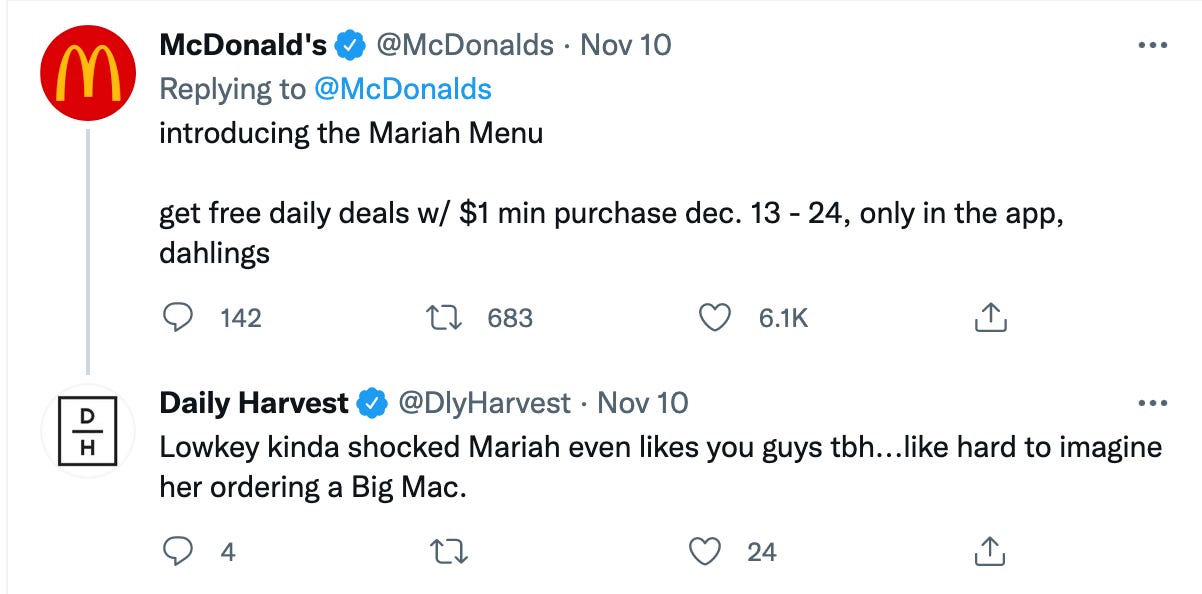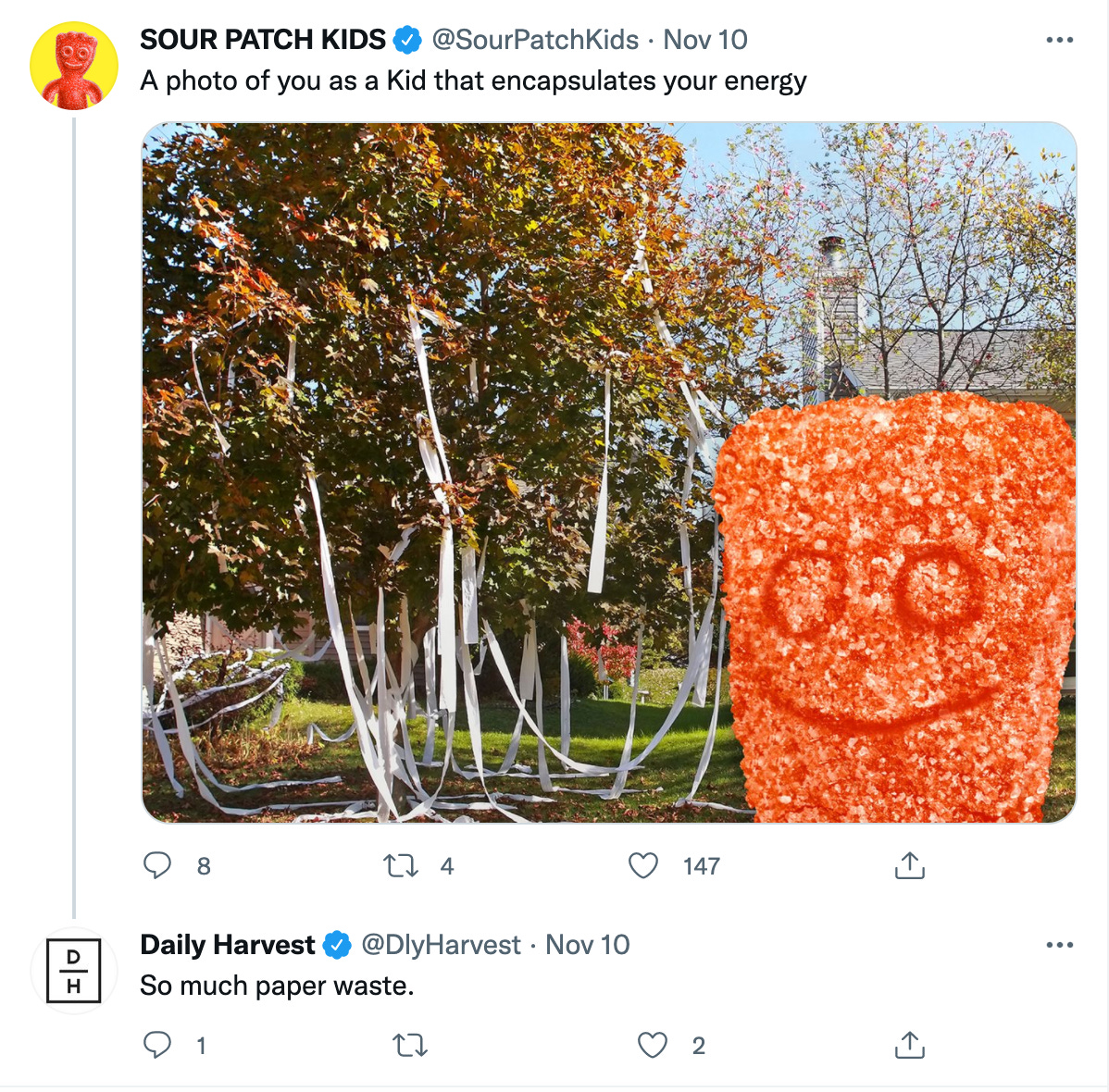Embedded is your essential guide to what’s good on the internet, from Kate Lindsay and Nick Catucci.🧩
I promise I only mention the Duolingo TikTok once in this. —Kate
There’s nothing I love more on the internet than stumbling upon a niche drama and deciding to get entirely invested in it. It's even better if I have absolutely no skin in the game and no real reason to care. That’s how I found myself scrolling through the Twitter feed of Daily Harvest, the ready-to-blend smoothie company, after a few social media managers I follow tweeted about it.
The brand seemed to be trying out a new tactic: engaging directly with “big” food brands on Twitter by calling them out for their unhealthy and sometimes obscure ingredients. But the tweets seemed to oscillate wildly between their stated mission and bad-faith harassment of the real person behind the big brand accounts.
Camille Lieurance, a social media marketer who wrote the initial Twitter thread that alerted me to this, published a larger breakdown of the issue over on Adweek. From someone on the consumer side of brand marketing—and who just endured a week of nonstop Duolingo TikTok coverage—this feels like an inevitable consequence of how brand social media personas have been forced to evolve.
Wendy’s Twitter is cited as the pioneer of personable brand Twitter, and the need to pass some kind of snarky brand Turing test has only intensified since. Every time I go to the comments of a TikTok I’ve enjoyed, there’s at least one—if not a handful—of brands throwing their completely unrelated two cents into the discussion. It’s not even like KitKat is commenting a pseudo-advertisement (“This video makes me want a KitKat!”). It’s just something like, “that’s the tea, bitch!” with a bunch of likes. (Sorry, KitKat, you were just the first brand that came to mind, because I bought one of you last night #notanad). Brands are no longer simply trying to appear funny, they’re imitating normal people like you and me, scrolling TikTok before going to bed.
Many brands are achieving this by quite literally putting a face to the product, using the Snapchat eyes and mouth filter to humanize everything from an Amtrak train to the general concept of the Audubon Society. Otherwise, they’re grabbing the nearest 20-something and putting them in front of the screen. (I was once at a party that was interrupted by whispers that the “Planet Money TikTok guy” was there.)
This humanization, aside from its tendency for nastiness a la Daily Harvest, also results in the face of the brand becoming its permanent spokesperson. While I’m sure Flo from Progressive gets stopped on the street, she’s not required to interact with those people as Progressive, the way brands on TikTok are in the comments of viral videos. Keeping up the character 24/7 online likely leaves no room for that employee’s personal social media (something Rachel Karten recently explored in her newsletter Link In Bio), meaning that on some level, at least, the brand persona wins out over the real person.
Mostly, this makes me sympathetic to the workers behind these accounts, for whom following this new humanization trend means dedicating increasingly more time to their work. They have to be watching the TikToks, following the Twitter discourse, and explaining it all to executives who probably don’t understand any of it. And, really, if I showed you this picture out of the blue, would you understand what was going on, either?





